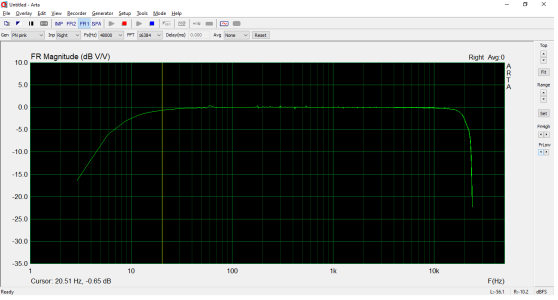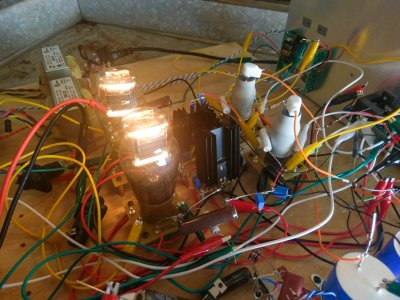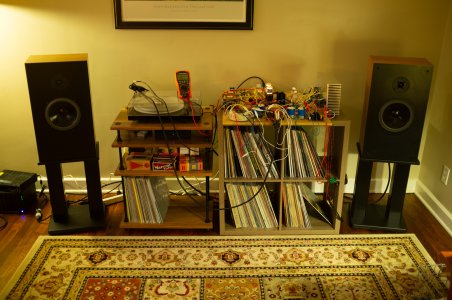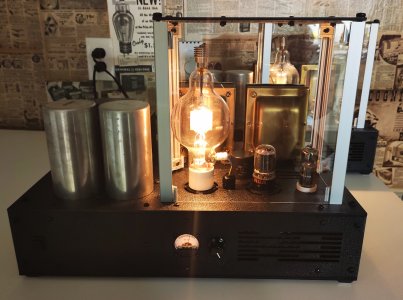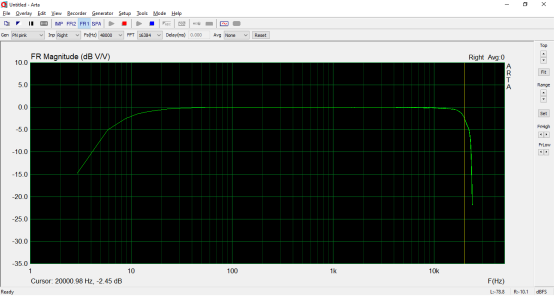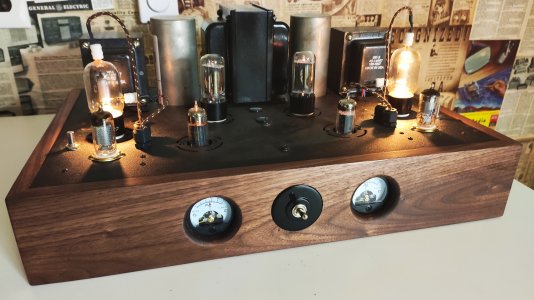I figured it out PB, with my OPT wired for 6.5K:8ohm, the copper losses go up from 0.5dB to 0.8dB. I am getting around 572Vpp into a 6.5K load, with the copper losses I should be getting a little over 5W out, and that is what I am seeing. The 801A is clipping asymmetrically though at the positive peaks with my 360V 50mA bias point, might drop it down to 350V 50mA and see if I can get a more symmetrical clipping, my OPT are made for 50mA on the primary, so can't crank up the current, that would put me at 17.5W plate dissipation, so not a bad place to be for longevity.
Thanks for suggesting the pentode NFB route PB, someone else had suggested it too early on in my project, I poo poo'd it at the time, "NFB in my amp? Never!" I won't be saying that ever again. I lugged this monstrosity into my house today (it is built on a piece of plywood, picture below). Gave it a listen with my Snell J/II that I recently restored. This amp sounds INCREDIBLE, I mean, really it is something else, even compared to my 45 parafeed amp and my 6A5G SET, which are no slouches IMO. The detail, bass definition, eerie level of imaging...
I was listening with headphones today with a 8.2ohm resistor paralled on the output, at a pretty high listening volume for headphones. I left the volume where it was, unplugged my headphones and measured an FFT. The distortion was 0.023%. So super low THD with headphone listening, around 1.2% THD at 1W into 8ohms.
Going to further optimize the NFB tomorrow and maximize it while still driving the 801A to clipping. These EF37A tubes are pretty cool.

